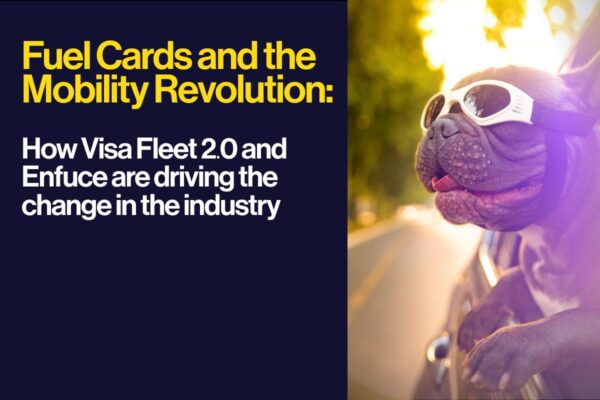Efficient payments as margin driver for mobility services

Especially coming out of the COVID-19 pandemic, mobility operators are working hard to make their business profitable by getting their customer volume up and costs down. As payments are an integral part of mobility, they provide a major opportunity for cost optimisation.
If mobility operators want to grow their margin and stay competitive, developing their payment infrastructure to optimise transaction volume and system maintenance costs is a must. On the other hand, public demand for easy-to-use digital services drives operators to develop their digital user experience.
The mobility players who can both optimise payments and develop a premium user experience will be the winners in the post-COVID market.
Cost optimisation through pooling of transactions and new card solutions
With low-value transactions being typical to the mobility business, the optimisation of transaction volume and associated fees is make or break for the transport operators. One way to improve margins is to cut the commissions paid to third parties by pooling transactions together. Daily, weekly, or monthly billing systems and prepaid packages are some of the ways operators are now pooling their transaction volume and reducing related costs.
Stored value cards and proprietary solutions are giving way to new standard-based payment card solutions.
We are seeing more open loop cards that work like closed loop cards in the operator’s own network. It is easy for the end user, as everything happens under the hood; they just use their own payment card or a travel provider’s benefit card. And it is cost-efficient for the operator, as they pay less than the standard card network fees, with more opportunities to innovate on products.
If, in addition to optimising payments, a mobility operator can also optimise user and traffic volumes through demand responsive transport or other ways of eliminating unprofitable routes, they can take their cost-efficiency to a new level.
This is not easy to do, but with the help of integrated mobility services, benefit programs, and data services, the operators are able to understand the overall transit system flows better, and even shape the flow with digital services as well as incentives to the end user. Incentives, which are also made possible by the cost reductions in the ticketing system – despite the seemingly low transaction fees, traditional proprietary systems tend to be expensive over their lifecycle due to vendor lock-in.
Post-COVID world sees a public demand for digital payment methods
The Nordics saw a significant transition towards digital payments even before COVID, but with the pandemic, digital and contactless payments became the norm in all aspects of life even in more traditional markets. Cash payments have held a strong position in Central Europe for a long time, but now people are increasingly demanding digital access to services.
Some users might still prefer traditional stored value cards, but in general, people don’t want to spend time travelling to ticket offices or queueing for customer service, or store money on a card unsure of how it can be reimbursed, if at all.
Contactless and embedded payments are rapidly becoming the preferred methods for both the ease and the safety of them. When the payment happens with a tap of a card, device, or wearable, it eliminates the risks of needing to touch vending machines or cash, with something that people are always carrying with them anyway. Now that people are used to the convenience, there is no going back, despite the return to the workplace.
Transition towards contactless EMV a major profitability booster for public transport
We are seeing many big cities adopt contactless EMV payments and ticketing. User demand for seamless, easy-to-use digital services is surely a driver, but more than anything, cities are beginning to see that their legacy systems are no longer financially or technically viable.
The transition towards open loop contactless EMV gives cities a great chance to save in costs. London was one of the first cities in the world to build a contactless EMV ticketing system. In 2016, Transport for London announced that reduced commissions, increased revenue, and other cost savings resulting from the transition to contactless EMV translated into over £100 million pounds in annual savings.
As reported by Mastercard in 2020, by reducing payment activity across its rails through contactless payments, Transport for London has seen a reduction in the Cost of Fare Collection from 14% to around 9%, with further reductions expected.
Rethink customer loyalty – build user dialogue
Especially in consumer business, deep customer loyalty or protecting customer “ownership” is a thing of the past. A single registration to an app doesn’t mean that the user is now a loyal customer. An app is something of a retention hook but if tomorrow there is a cheaper provider or an easier service to use, that’s where the users will go.
When the scales can tip in favour of the competitor anytime, the operators’ best chance at retention is to connect with users and build a customer relationship through dialogue and continued improvement.
By listening to their customers, mobility operators can develop their product and service based on real customer needs. As a result, customers feel heard and cared for. Operators who can build a customer relationship like this will have the upper hand in fierce competition.
Investment in user experience pays off
At MaaS Global, I saw time and time again that investment in user experience was a major factor in running a successful mobility business in the long term. The users of the mobility app Whim rated the app easy to onboard and the payment experience modern and straightforward, which inevitably contributed to the user volume of the service.
Within payments, Stripe is one success story that has put major effort into user experience as well as developer experience. According to their publications, this has inarguably had a positive effect on their user satisfaction and, I dare say, conversion rate. Investments in developer experience show as productivity and quality – being able to make premium experiences available faster.
When payments are not embedded into the service but provided by a third party, the payment part of the buying process is often the one that breaks the customer experience. The user might be directed to another service for another signup and authentication, having to fill in yet another form.
Every time there is a glitch like this in the process, the provider risks losing a customer who has already decided to buy. That is why seamless user experience is crucial in customer retention. At the minimum, utilising the full capabilities of the device, such as prefilled payment information, if not full wallet integration, might be just the thing that smooths the way for the user and keeps them from switching to another app.
Of course, even the best payment experience doesn’t make people trade their private cars for public transport or greener transport methods in masses. There is still a way to go, but the mobility sector is developing fast and coming up with new ticketing concepts and payment products. With these innovations, mobility companies can better serve the users and incentivise more environmentally friendly ways of getting around, whether it is Mobility as a Service or new ways for companies to subsidise public transport for their employees.
READ BLOG: Customer insight and seamless user experience – 4 reasons to launch a mobility payment card
About the author
Sami Pippuri is a full-stack product development leader, executive, and board member. As the CTO of the disruptive transportation service MaaS Global, he built the next generation of digital mobility services – Whim – from scratch and took it to the next level with scalable serverless infrastructure, mobile apps, and a data platform enabling machine learning experiments at scale.



